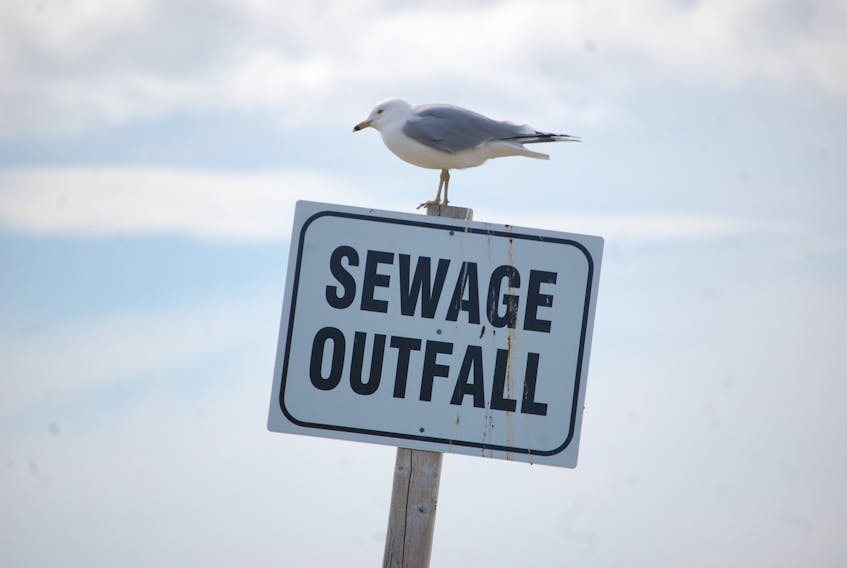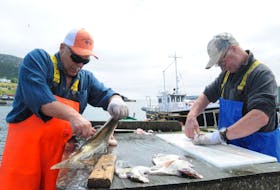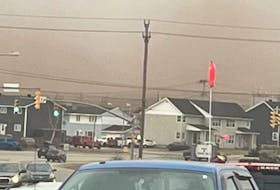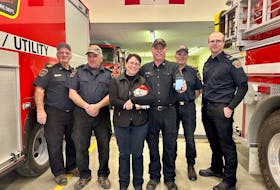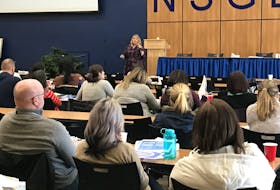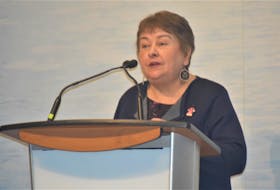PARADISE, N.L. — When it comes to understanding the mindset of municipalities grappling with federal regulations to treat wastewater as a pollution prevention tool to help rivers, streams and oceans, Steve Priestley has heard lots of talk over the years.
The vice-president of Biomaxx Environmental has met with municipal leaders all over Newfoundland and Labrador. A company which also has offices in British Columbia and Alberta, Biomaxx established a presence in this province about five years ago.

“Originally, we came here to design wastewater treatment plants,” he explained in a recent interview with The Compass. “When we got here, what we realized was virtually no communities in the province were even close to that phase. I essentially rented a vehicle and drove around the province for two weeks talking to communities about their issues, this-that-and-the-other and realized wastewater compliance wasn’t here.”
Indeed, that remains the case today for the most part. The federal Wastewater System Effluent Regulations apply to those that collect an average daily volume of 100 cubic metres of influent. According to Environment and Climate Change Canada (ECCC), out of 197 municipal wastewater systems in Newfoundland and Labrador, 79 handle an average daily volume below that threshold.
The regulations came into effect at the beginning of 2015. Right now, only three municipalities in the province have been granted a grace period for compliance (also known as transitional authorization) — St. John’s, Gander and Springdale. Those deadlines range from the end of 2020 to 2030 and 2040.
Biomaxx opened a local office in Paradise and now is working with municipalities in the province, advising them and helping them work through the compliance regulations. They conduct infrastructure studies, detect leaks and monitor the flow in sewer lines. On the latter item, Priestley estimates Biomaxx is working with approximately 80 per cent of municipalities in the province.
In his five years working in the province, Priestley sees that many municipalities are becoming more forward-thinking when it comes to addressing wastewater treatment.
“Communities are starting to see what kinds of flows are going through those outfalls … where they didn’t have that information before,” he said.
In talking with towns, he likes to translate the flow data. For example, a municipality with 1,200 cubic metres of wastewater going into the bay each day is equivalent to 1.2 million one-litre milk cartoons.
“That gives them a little more perspective when they can physically see the data and actually see what’s going out into the bay or into the river or any receiving stream in their community,” Priestley said. “I think now that they’re starting to see that data, they become a lot more forward-thinking.”
Challenges
The number one challenge he sees facing municipalities in the province when it comes to wastewater treatment is funding, along with aging infrastructure. With estimated costs in the millions for many communities, municipal governments all over the province have openly wondered how they can afford to comply with the regulations.
That said, the federal government is starting to beef up its enforcement presence in Newfoundland and Labrador. As of 2017, there were two federal enforcement officers in the province who could recommend charges while citing Fisheries Act violations. According to an ECCC spokesman, there are now four officers designated under the pollution prevention provisions based in Newfoundland and Labrador.
Since 2002, the federal government has funded almost 3,200 wastewater projects, and through the federal Gas Tax Fund, municipalities across Canada have spent $2.5 billion on wastewater infrastructure projects since 2005. As of the end of January, federal investment in wastewater projects exceeded $3.9 billion. ECCC told The Compass there are still funding opportunities municipalities can avail of federally. That includes the green infrastructure stream ($9.2 billion) of the Investing in Canada Infrastructure Program from the 2017 budget (with cost-shared funding through agreements with the provinces and territories), plus the $2-billion Clean Water and Wastewater Fund announced in the 2016 budget. The latter fund has supported 1,239 wastewater projects at a value of $838 million.
Technological assists
Meanwhile, Priestley notes there are some steps towns can take to make sure the flow volumes are accurate and prevent them from overspending on wastewater treatment infrastructure. Leaks can cause extra water from rainfall or melting snow to seep into the sewer lines and distort how much wastewater is reaching the outfalls.
“If you’re going to build a wastewater treatment plant to treat 2,000 cubic metres a day of wastewater and realistically a lot of that is just rain water and ground water coming in,” he said. “Long-term, you’re building a wastewater treatment plant that you might not need to do if you can fix that infrastructure. So, if it means building a $20-million wastewater treatment plant versus a $5-million wastewater treatment plant if we fix the infrastructure in not treating ground water or treating rain water or snow melt, a lot of communities are now taking that next step to figure out how they can reduce those flows and limit their impact to the environment.”

Through a process called smoke testing, Biomaxx has pumped a specialized smoke into a town’s sewer lines and identify cross-connections to address. Drones are used to provide an aerial view to catch where the smoke is noticed.
“If there’s a drainage ditch on the side of the road that’s leaking or cracked and that’s going into their sanitary sewer, we’ll see smoke coming out of there,” Priestley said.
Priestley notes too that technology has come a long way when it comes to treating wastewater. There are setups that amount to “glorified lift stations,” he said, that would meet the federal regulations for treatment. Using these for individual outfalls can eliminate the need for larger pieces of infrastructure that may prove more costly.
“The technology is there where it shows power decrease, less chemical usage, less operator long-term maintenance … the costs really go down.” He noted towns in close proximity can look to share some labour costs — sharing the cost of infrastructure is less likely.
“Is it easy to tie Brigus with Clarke’s Beach and Cupids together? That’s not really obtainable.”
In some cases, Priestley said there remains a lack of awareness when it comes to the options municipalities have for treating wastewater, and he’s hopeful a continual dialogue will help them realize compliance with the federal regulations is obtainable. But to get there, he said towns will need to start thinking about the planning phase.
“One of the things I’ve been talking to communities about is it’s obtainable where it doesn’t cost the community lots of money, because developing the plan doesn’t cost a lot of money,” he said.
SEE RELATED:
'N.L. towns struggling to meet new wastewater regulations'
'Wastewater enforcement one more thing for municipalities'
'Wastewater monitoring policy makes little sense: Brigus town manager'

